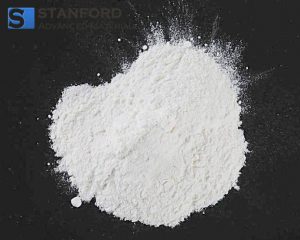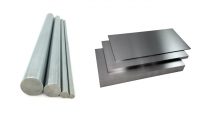The Uses and Applications of Molybdenum Oxide: From Catalysts to Solar Panels
Introduction
Molybdenum oxide is a versatile material with unique properties that make it an ideal choice for various applications across industries. Its high melting point, for instance, makes it suitable for use in high-temperature environments. Molybdenum oxide finds wide-ranging applications in several areas such as catalysis, solar panels, electronics, biomedical applications, and steel alloys. The properties of molybdenum oxide are primarily responsible for its diverse range of applications, and researchers continue to explore its potential uses.

Uses of MgO in Catalysis
One of the primary uses of molybdenum oxide is as a catalyst. Molybdenum oxide is used as a catalyst in various chemical reactions, such as the oxidation of methanol to formaldehyde, the desulfurization of natural gas, and the removal of nitrogen oxides from exhaust gases. The use of molybdenum oxide as a catalyst has several benefits, such as high selectivity, low cost, and high activity.
Applications of MgO in Solar Panels
Another significant application of molybdenum oxide is in solar panels. Molybdenum oxide is used as a back electrode in thin-film solar cells. The thin film solar cells consist of multiple layers of materials such as cadmium telluride, copper indium gallium selenide, and molybdenum oxide. The molybdenum oxide layer helps in improving the efficiency of the solar panel by facilitating electron transport from the photoactive layer.
Utilization of MgO in Electronics
In addition to these applications, molybdenum oxide finds use in the electronics industry. Molybdenum oxide thin films are used as gate electrodes in thin-film transistors and in the fabrication of capacitors. The high melting point of molybdenum oxide makes it ideal for use in these electronic applications.
MgO’s Potential Biomedical Applications
Molybdenum oxide nanoparticles have unique properties that make them useful in biomedical applications. Researchers are exploring the potential of molybdenum oxide nanoparticles in drug delivery systems, cancer treatment, and magnetic resonance imaging (MRI). The small size of molybdenum oxide nanoparticles makes them suitable for delivering drugs to specific parts of the body.
Usage of MgO in Steel Alloys
Apart from these applications, molybdenum oxide is also used in the production of steel alloys. Molybdenum oxide is added to steel alloys to improve their hardness, strength, and corrosion resistance. This use of molybdenum oxide is particularly important in the aerospace and defense industries, where high-strength and corrosion-resistant materials are essential.
Conclusion
In conclusion, molybdenum oxide finds applications across several industries, ranging from catalysis to solar panels to biomedical applications. Its unique properties make it an ideal material for use in high-temperature applications, electronics, and steel alloys. Despite its diverse range of applications, researchers continue to explore the potential uses of molybdenum oxide, and we can expect to see more innovative applications in the future. For more information about molybdenum and Mo products, please visit https://www.samaterials.com/6-molybdenum.html.



